In this engaging workshop hosted by WeCloudData, Satyam Mittal, an AI software engineer with expertise in retail and fintech, provided a comprehensive exploration of building AI applications using Retrieval-Augmented Generation (RAG) and agentic RAG. The session blended theoretical foundations with hands-on demonstrations, equipping attendees with practical insights into implementing and optimizing these cutting-edge AI technologies.
Key Topics Covered
1. Introduction to RAG and Core Concepts
Satyam began by introducing RAG, a hybrid AI approach that enhances language models by retrieving relevant data from a database before generating responses. He outlined several key concepts to set the stage:
- LLMs (Large Language Models): The core AI models powering RAG systems.
- Embeddings: Numerical representations of text for machine understanding.
- Vector Databases: Specialized databases for storing and querying embeddings.
- Prompt Engineering: Crafting effective queries for LLMs.
- Agents: Autonomous programs that act on user inputs.
This foundation ensured attendees had a solid grasp of the essential components of RAG systems.
2. Understanding Transformer Architecture
The workshop provided a concise overview of the transformer architecture that underpins modern LLMs:
- Encoders and Decoders: Encoders process input data, while decoders generate outputs.
- Attention Mechanisms: These allow models to focus on word relationships, enabling contextual understanding.
This segment reinforced the critical role of transformers in powering AI-driven retrieval and generation.
3. Building a Basic RAG System
Satyam guided attendees through a practical demonstration of constructing a basic RAG system using Google Colab, OpenAI embeddings, and ChromaDB. Key steps included:
- Data Chunking: Strategies for splitting large texts into smaller segments, including fixed, recursive, and semantic chunking.
- Implementation: Loading a PDF (e.g., “Attention Is All You Need”), chunking it, embedding it into ChromaDB, and querying it to retrieve answers.
He emphasized the importance of chunk overlap for maintaining context and introduced tools like Langchain to simplify implementation.
4. Advanced RAG and Agentic RAG
Expanding beyond basic RAG, Satyam explored advanced techniques to enhance retrieval accuracy:
- Metadata Utilization: Storing additional details (e.g., source documents) for refined retrieval.
- Query Transformation: Rephrasing queries to improve database matching.
He then introduced agentic RAG, where agents autonomously enhance AI functionality:
- Agents: Programs that act dynamically based on queries (e.g., fetching weather data based on location input).
- Multi-Agent Systems: Combining vector database searches with API calls to handle complex, real-world applications.
5. Evaluation and Optimization
Satyam highlighted the importance of evaluating RAG systems to ensure reliability and performance:
- Metrics: Assessing retrieval accuracy and response relevance.
- Observability Tools: Platforms like Langsmith and Arise AI Phoenix for monitoring performance, latency, and token usage.
Attendees learned how observability tools help track system behavior and identify potential issues like hallucinations.
6. Practical Guidance and Resources
Throughout the session, Satyam provided valuable recommendations:
- Tool Selection: Choosing vector databases (e.g., ChromaDB for open-source projects, Pinecone for enterprise applications).
- Learning Path: Starting with fundamental machine learning before progressing to generative AI.
He suggested resources such as WeCloudData courses, open-source blogs, and research papers from AI experts like Andrej Karpathy for further learning.
Q&A Highlights
The session concluded with an interactive Q&A where attendees received expert advice on specific challenges:
- Code Retrieval: Satyam recommended dedicated code retrieval tools over RAG due to potential hallucinations.
- Name Extraction from Emails: He advised using encoder-based models (e.g., BERT for Named Entity Recognition) and fine-tuning with labeled data via tools like Hugging Face’s SFT.
Access Webinar Materials
For those who missed the session or wish to revisit the concepts, the following materials are available:
- Presentation Slides (PPT)
- Jupyter Notebook: Pydantic AI Agents
- Jupyter Notebook: Naive RAG, Agentic RAG, and LLM Observability
Conclusion
Satyam’s workshop offered a detailed roadmap for building, optimizing, and scaling RAG and agentic RAG systems. By bridging theory with hands-on coding and advanced methodologies, attendees left with actionable knowledge to develop AI-powered applications.
WeCloudData encourages participants to experiment with the provided notebooks and continue their learning journey through our educational resources. Explore our Self-paced Courses to learn at your convenience course in Python, SQL, statistics, AI, and Machine Learning. Data & AI Training Programs for Corporate with expert instructors. Mentorship from industry professionals to guide your learning journey. Portfolio support to build projects that stand out.
Stay tuned for upcoming webinars and more AI deep dives!

